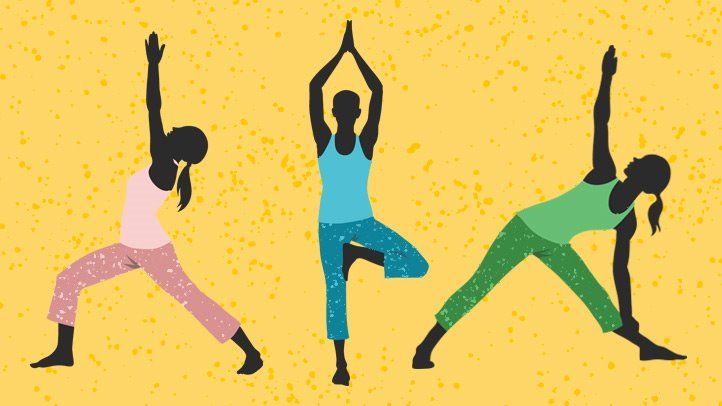
The most recent survey suggests more than 20 million Americans practice yoga, making it one of the most popular forms of exercise. Even Vladimir Putin, a devotee of “macho sports,” added downward dog to his repertoire.
But is yoga really that great for health compared with other exercises? Does it really help improve our response to stress or correct bad posture, as often promised? Maybe our perceptions about yoga are biased. Or maybe, as some critics have pointed out, there are downsides to yoga. Who can forget the controversial New York Times story from 2012 suggesting that some people get seriously injured, or even die, on their yoga mats.
I wanted a more objective view on the health effects of yoga, so I turned to science, reading more than 50 studies and review articles and talking to seven of the world’s leading yoga researchers. Almost immediately, I was struck by how weak the research on yoga is. Most studies were small and badly designed or plagued by self-selection bias. Making matters worse, there are so many varying styles of yoga that it’s tough to say how meaningful evidence about one style is for others.
Still, what I learned is that there are a few things we can say about yoga, based on the available research. Yoga probably won’t hurt you, despite what haters claim, and it appears to be just as good for your health as other similar forms of exercise.
Even more, yoga seems to help alleviate lower back pain, improve strength and flexibility, and reduce inflammation in the body — which, in turn, can help stave off chronic disease and death. Emerging research suggests yoga can increase body awareness, or attention to the sensations and things going on inside you. That’s no small matter: Researchers think heightened body awareness can improve how well people take care of themselves.
Keep in mind, however, that other mind-body exercises — such as tai chi or meditation — can boost body awareness and reduce inflammation, too. That’s the catch with a lot of yoga research: It still hasn’t told us how much better or different yoga is for a number of health measures when compared with other forms of exercise. Finally, many of the most outlandish claims people make about yoga, like the idea that it can alleviate constipation or wring out toxins, either aren’t backed by science or haven’t been studied at all.
The first randomized trial (or high-quality experiment) on yoga was published in 1975 in The Lancet. It showed that yoga was more effective than relaxation for reducing high blood pressure. But that trial only involved 34 participants, and all of them already had high blood pressure, so it is difficult to know whether the effect of the yoga would bear out in a larger trial of healthy people.
Since then, the number of yoga studies has dramatically increased, but the field is plagued by some of the same problems of that early study. Many yoga studies still involve small numbers of participants. Many lack a control group. Many don’t compare yoga to activities we’d be interested in comparing it to. (Ideally, for instance, we’d want to know how yoga measures against another form of exercise or mind-body practice — not, as one study examined, comparing whether it’s better for back pain than giving people a book on how to manage their back pain.)
“
”
“”FOR MOST CONDITIONS, THE MAIN PROBLEM IS WE DON’T HAVE ENOUGH EVIDENCE YET”
”
What studies do exist are often short term. There are no long-term studies on mortality or serious disease incidence. There are few long-term studies on the potential harms yoga can wreak on the body. “For most conditions,” says Holger Cramer, director of yoga research at the University of Duisburg-Essen in Essen, Germany, “the main problem is we don’t have enough evidence yet.”
Studying yoga is also tricky. Researchers generally believe blinded studies are the highest quality of research, because participants involved don’t know what intervention (such as a drug) they are receiving and their biases and perceptions don’t color the outcomes. But you can’t blind people to the fact that they’re doing yoga.
Then there’s the biggest question at the center of yoga research: How do you define yoga? “Yoga is many things to many people,” said Karen Sherman, a researcher affiliated with the Group Health Research Institute. “What you put into a yoga intervention probably impacts what you get out.”
Yoga usually involves some combination of the following: postures and poses (asanas), regulated breathing (pranayama), and meditation and relaxation (samyana). But many classes mix in other elements, from chanting to heating to music. There’s also a lot of variation in teaching quality and style. Hatha and Iyengar yoga are mostly made up of stretches and restorative poses, while ashtanga and vinyasa tend to be more vigorous and athletic. Yin yoga probably won’t make you sweat: You mostly hold postures for long periods of time for very deep stretches. In Bikram, which consists of 26 postures repeated twice in a room that’s heated at 105 degrees, you can be sure you’ll drench your yoga clothes in perspiration.